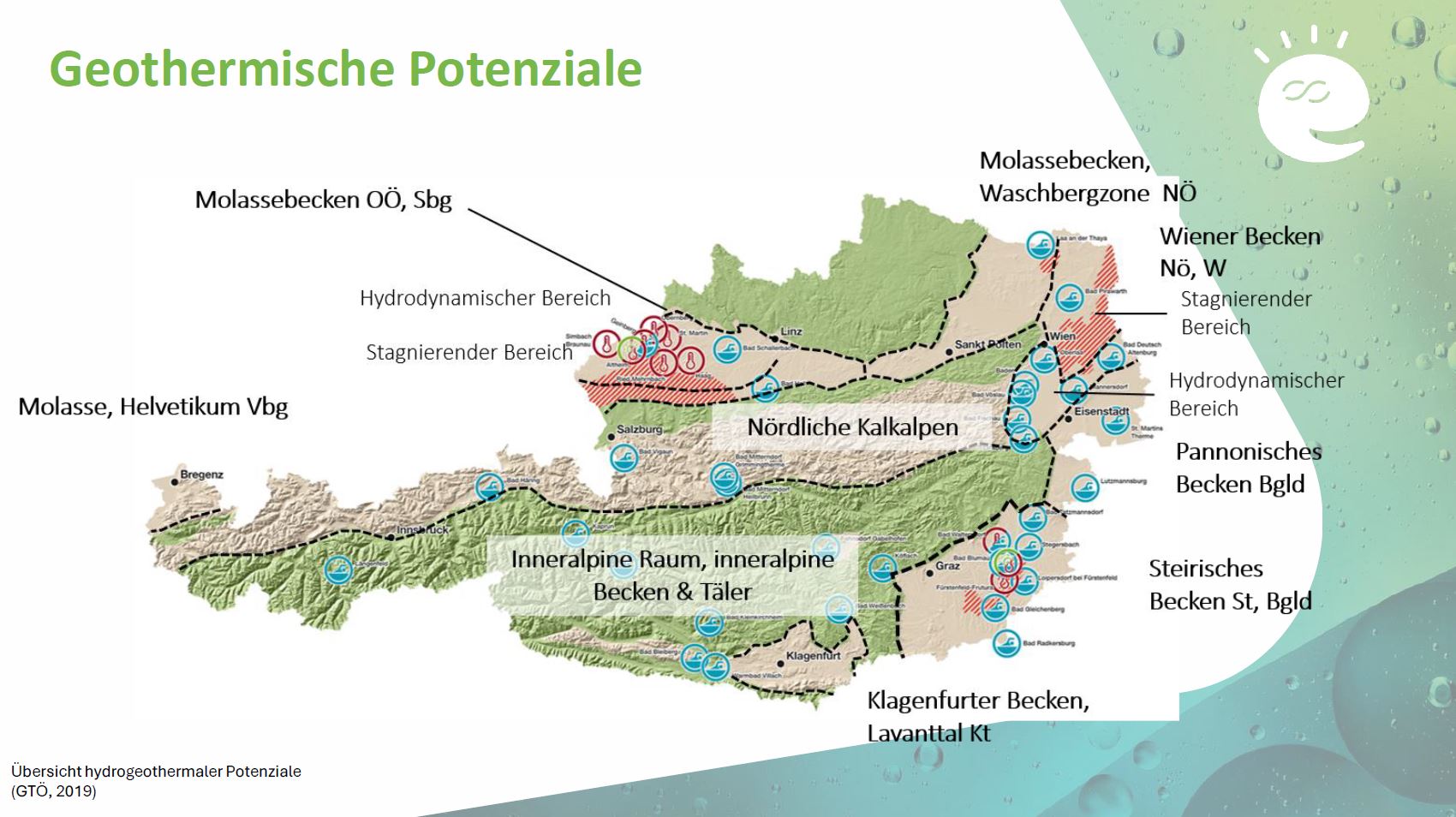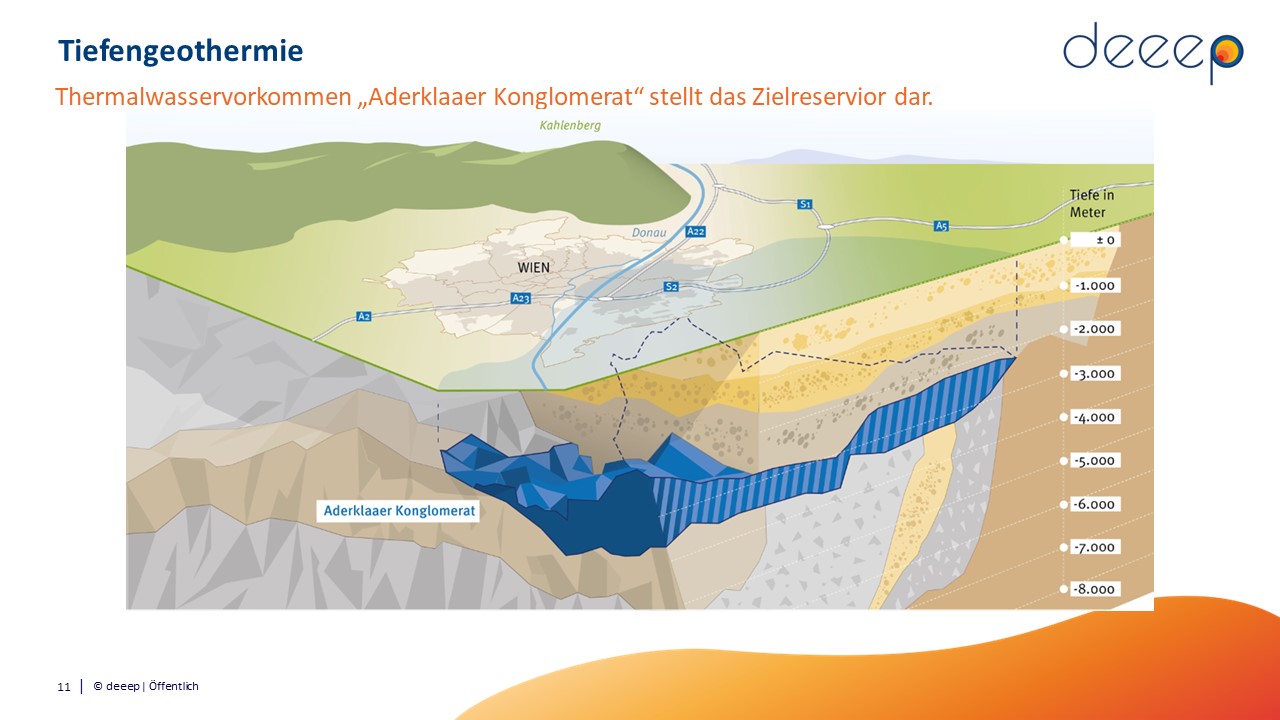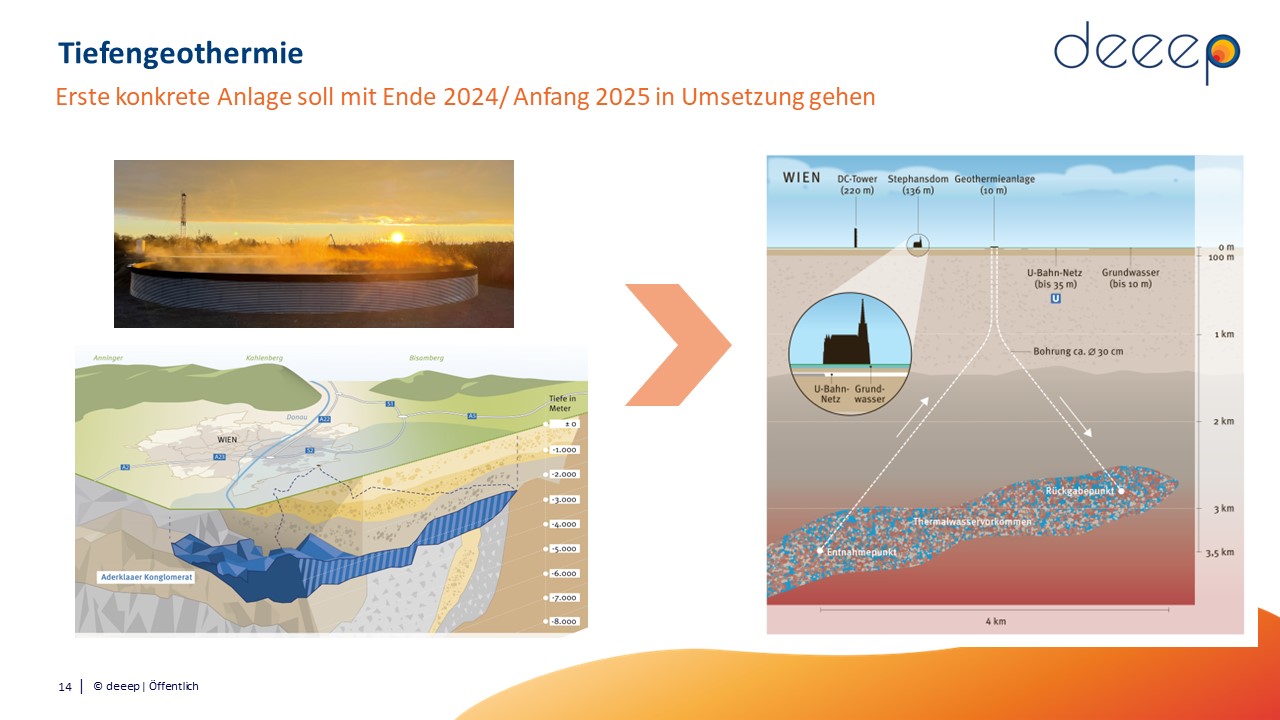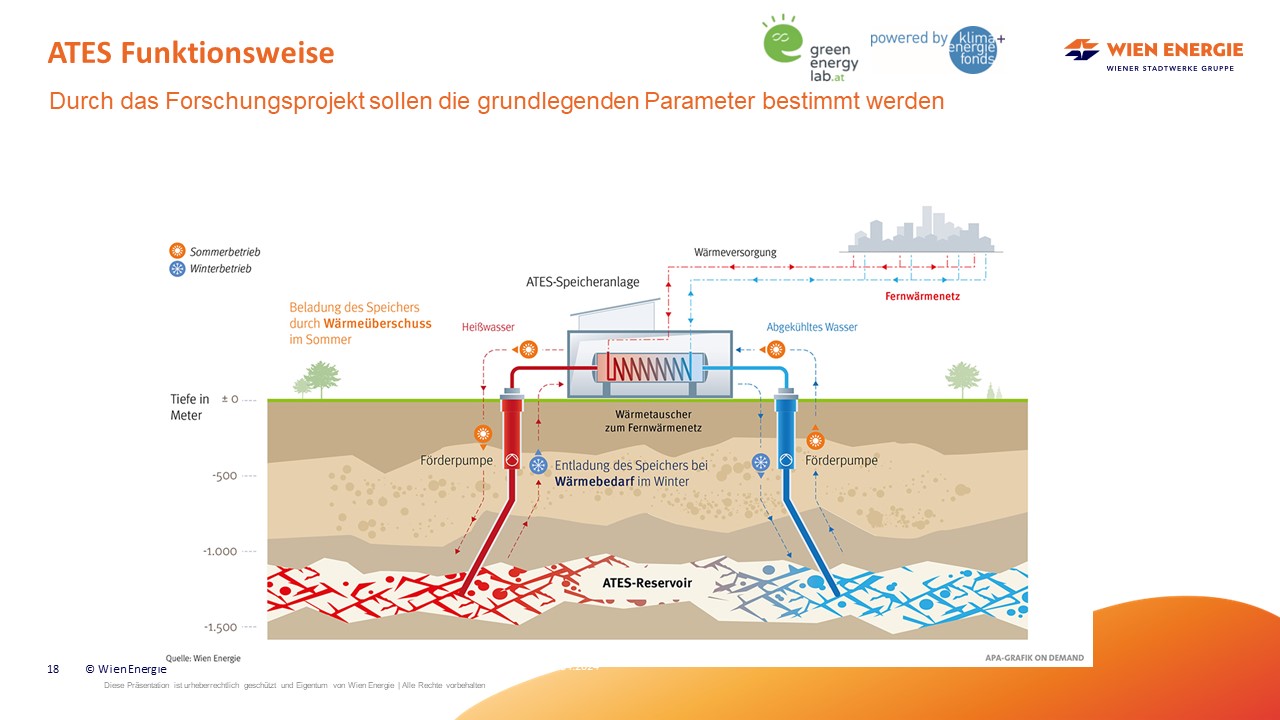Potential of geothermal energy for the energy transition
Does geothermal energy in Austria have the potential to become a key energy source for the heating transition? The Green Energy Lab dedicated a special Insight Talk to this question on April 23, 2024.

24 April 2024 – The Green Energy Lab dedicated a special Insight Talk to the topic of geothermal energy. In this online format, relevant experts gave an insight into the topic and current projects for its utilization. One key point was the importance of geothermal energy for the energy transition.
“Of course, it is not a universal remedy for everything, but I and many of my colleagues are convinced that geothermal energy is an essential piece of the puzzle in the heat and energy mix of the future,” says Gregor Götzl, Head of Geothermal Energy at EVN Wärme GmbH and founding member of the Geothermal Energy Austria Association. From a global perspective, there has been exponential growth in almost all areas of geothermal energy use since 1995. In 2020, 284 terawatt hours (TWh) of geothermal energy were already being used worldwide. Growth was strongest in the heat pump sector. “In geothermal energy – if we also look at geothermal energy or near-surface solutions – this is the key sector globally, in Europe and also in Austria, which has by far the largest share,” says Götzl.
A total of 2.19 million geothermal heat pumps have already been installed in Europe, which shows the enormous market potential of this application. The leader in terms of share is Sweden, where 11% of all households already have a geothermal heat pump. The proportion is also relatively high in Austria at around 3 %, although geothermal heat pumps have faced strong competition from air source heat pumps in this country. Nevertheless, it is estimated that around 100,000 geothermal heat pumps are installed in the Alpine republic, extracting a total of around 2.6 TWh of heat from the earth.
Geothermal energy as part of the decarbonization strategy for Vienna
Wiener Stadtwerke and its subsidiaries cover numerous areas of activity, from mobility to waste disposal. The City of Vienna aims to be climate-neutral by 2040, i.e. to produce no more net CO₂ emissions. Wien Energie, which is part of the Stadtwerke Group, is also making its contribution to Vienna’s decarbonization targets. In particular, the aim is to make the heating sector independent of fossil fuels.
Wien Energie operates one of the largest district heating networks in Europe and the network is being further expanded and densified. The share of district heating in the city’s final energy consumption will increase to around 6.7 terawatt hours (TWh) per year by 2040. However, the importance of combined heat and power plants will decrease drastically. In 2040, these will only contribute a third of today’s heat quantities to district heating. There are also plans to operate the remaining plants only with green gases, such as biomethane or green hydrogen.
At the same time, the use of waste heat sources by means of heat pumps is to be expanded. One example of this is the large-scale heat pump already in operation at the main wastewater treatment plant in Vienna Simmering, which extracts heat energy from the wastewater after treatment. The plant is already in operation and will be expanded further. When fully expanded, it will generate up to 880 gigawatt hours (GWh) of thermal energy per year and supply 112,000 households. Another example of the use of waste heat sources is the High-temperature large heat pump in Vienna Spittelau, which went into operation at the end of 2023 and harnesses thermal energy from the flue gas of the waste incineration plant for 16,000 households. The plant is a demonstrator of ThermaFLEX and was implemented in the Green Energy Lab as part of the “Vorzeigeregion Energie” innovation offensive of the Climate and Energy Fund.
In addition to the installation of large heat pumps, the second approach to tapping into new sources of district heating is the utilization of deep geothermal energy. “Geological data and studies have shown that there is definitely potential under Vienna. Old oil and gas wells drilled by OMV also showed that there is warm water in the Vienna Basin,” says Rusbeh Rezania. He is Head of Alternative Thermal Asset Development at Wien Energie GmbH and CFO of deeep Tiefengeothermie GmbH, a joint venture between Wien Energie and OMV.

Deep geothermal energy development in Vienna
Following an unsuccessful borehole in 2012, a large-scale research project called “GeoTief” was launched in 2016. The main aim was to generate data, understand the subsurface and assess the potential with the aim of identifying suitable locations and drawing up a development plan. 2D seismic measurements were carried out in 2017, followed by additional 3D seismic measurements in an area of around 180 km² in 2018/19 in cooperation with OMV. The new knowledge was used to create a 3D model of the subsurface. As a result, the existing borehole from 2012 was reactivated and a thermal water-bearing layer was actually found. This confirmed the reservoir’s suitability in principle for the use of geothermal energy. “Nevertheless, geothermal projects of this kind are extremely investment-intensive,” explains Rezania. There is always a residual risk, even if all the analyses and calculations are carried out conscientiously in advance. This is why Wien Energie founded the joint venture “deeep” together with OMV in 2023. On the one hand, OMV has access to high-quality data and information about the subsurface thanks to its previous activities in the Vienna Basin. On the other hand, the risk can be shared in this way and joint investments made in the projects.
The aim of the joint activities is to implement up to seven geothermal plants in the eastern part of Vienna and thus connect a heat output of 200 megawatts to the heating network. The planning, construction and operation of the geothermal plants will be carried out by the joint venture deeep. Wien Energie will then be responsible for marketing and distributing the thermal energy. Implementation of the first plant is scheduled to begin as early as the end of 2024 or beginning of 2025.

Underground heat storage for seasonal compensation
The Project „ATES Vienna“, which is being carried out as part of the Green Energy Lab, deals with the possible storage of thermal energy in so-called “aquifers”. An aquifer is a water-bearing rock formation. (ATES stands for Aquifer Thermal Energy Storage).
“Logically, the heat requirement is higher in winter than in summer,” explains project manager Helene Mooslechner. The aim is therefore to store surplus heat from the summer months until it can be used in the winter months. The aim of the ATES project is to design the first technical pilot plant in Austria to integrate such aquifer heat storage systems into the district heating network.
In principle, the aquifer heat storage system functions like a large thermal tank. In summer, the underground reservoir is heated with surplus thermal energy from the district heating network. In winter, the process is reversed and the stored heat is released back into the district heating network and subsequently to the customers. Three possible geological formations in the eastern part of Vienna have already been identified for an underground heat storage facility. The reservoirs in question have temperatures of 60 to 70 degrees and are located at depths of 1,000 to 1,500 meters. They are therefore considerably cooler and closer to the surface than the reservoirs that have been considered for the direct use of deep geothermal energy.

Downloads
You are currently seeing a placeholder content of YouTube. To access the actual content, click on the button below. Please note that data will be passed on to third-party providers.
Video: In the Green Energy Lab Insight Talk, experts discuss the potential of geothermal energy in Austria.
Contact
Ludwig Fliesser
Communications Manager
T: +43 676 471 93 47
E: ludwig.fliesser@greenenergylab.at
